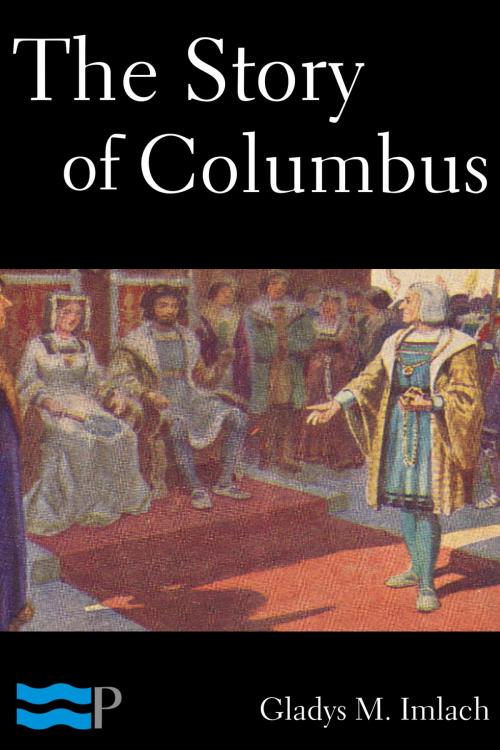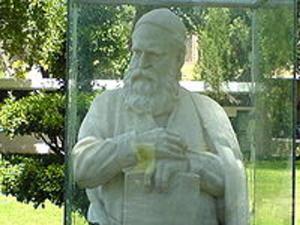The Story of Columbus
Nonfiction, History, Spain & Portugal, Americas, Native American, Biography & Memoir| Author: | Gladys M. Imlach | ISBN: | 9781508001324 |
| Publisher: | Charles River Editors | Publication: | March 22, 2018 |
| Imprint: | Charles River Editors | Language: | English |
| Author: | Gladys M. Imlach |
| ISBN: | 9781508001324 |
| Publisher: | Charles River Editors |
| Publication: | March 22, 2018 |
| Imprint: | Charles River Editors |
| Language: | English |
Pyrrhus Press specializes in bringing books long out of date back to life, allowing today’s readers access to yesterday’s treasures.
This is a short history of Christopher Columbus and his journeys to the New World. The most seminal event of the last millennium might also be its most controversial. As schoolchildren have been taught for over 500 years, “In 1492 Columbus sailed the ocean blue.” In October of that year, the Italian Christopher Columbus immortalized himself by landing in the New World and beginning the process of European settlement in the Americas for Spain, bringing the Age of Exploration to a new hemisphere with him. Ironically, the Italian had led a Spanish expedition, in part because the Portugese rejected his offers in the belief that sailing west to Asia would take too long.
Columbus had better luck with the Spanish royalty, successfully persuading Queen Isabella to commission his expedition. In August 1492, Columbus set west for India at the helm of the Nina, Pinta and Santa Maria. After a harrowing trip that nearly left his crew mutinous, on October 7, 1492, the three ships spotted flocks of birds, suggesting land was nearby, so Columbus followed the direction in which the birds flew. On the night of October 11, the expedition sighted land, and when Columbus came ashore the following day in the Bahamas, he thought he was in Japan, but the natives he came into contact with belied the descriptions of the people and lands of Asia as wealthy and resourceful. Instead, the bewildered Columbus would note in his journal that the natives painted their bodies, wore no clothes and had primitive weapons, leading him to the conclusion they would be easily converted to Catholicism. When he set sail for home in January 1493, he brought several imprisoned natives back to Spain with him.
Everyone agrees that Columbus’s discovery of the New World was one of the turning points in history, but agreements over his legacy end there. Columbus became such a towering figure in Western history that the United States’ capital was named after George Washington and him. Conversely, among the Native Americans and indigenous tribes who suffered epidemics and enslavement at the hands of the European settlers, Columbus is widely portrayed as an archvillain.
Pyrrhus Press specializes in bringing books long out of date back to life, allowing today’s readers access to yesterday’s treasures.
This is a short history of Christopher Columbus and his journeys to the New World. The most seminal event of the last millennium might also be its most controversial. As schoolchildren have been taught for over 500 years, “In 1492 Columbus sailed the ocean blue.” In October of that year, the Italian Christopher Columbus immortalized himself by landing in the New World and beginning the process of European settlement in the Americas for Spain, bringing the Age of Exploration to a new hemisphere with him. Ironically, the Italian had led a Spanish expedition, in part because the Portugese rejected his offers in the belief that sailing west to Asia would take too long.
Columbus had better luck with the Spanish royalty, successfully persuading Queen Isabella to commission his expedition. In August 1492, Columbus set west for India at the helm of the Nina, Pinta and Santa Maria. After a harrowing trip that nearly left his crew mutinous, on October 7, 1492, the three ships spotted flocks of birds, suggesting land was nearby, so Columbus followed the direction in which the birds flew. On the night of October 11, the expedition sighted land, and when Columbus came ashore the following day in the Bahamas, he thought he was in Japan, but the natives he came into contact with belied the descriptions of the people and lands of Asia as wealthy and resourceful. Instead, the bewildered Columbus would note in his journal that the natives painted their bodies, wore no clothes and had primitive weapons, leading him to the conclusion they would be easily converted to Catholicism. When he set sail for home in January 1493, he brought several imprisoned natives back to Spain with him.
Everyone agrees that Columbus’s discovery of the New World was one of the turning points in history, but agreements over his legacy end there. Columbus became such a towering figure in Western history that the United States’ capital was named after George Washington and him. Conversely, among the Native Americans and indigenous tribes who suffered epidemics and enslavement at the hands of the European settlers, Columbus is widely portrayed as an archvillain.















